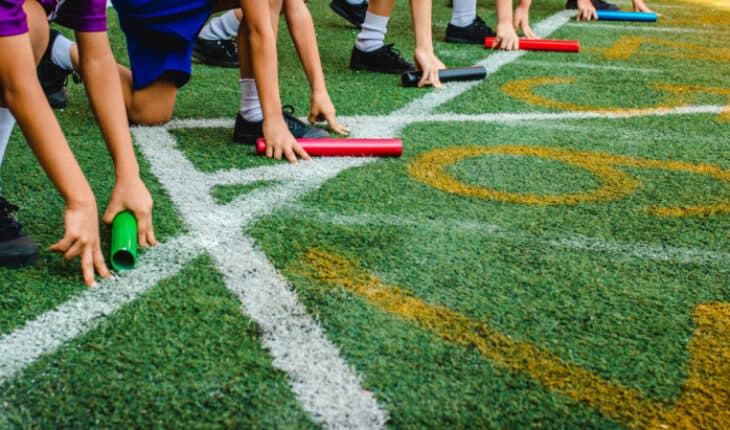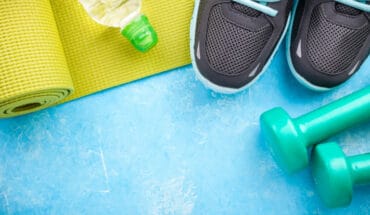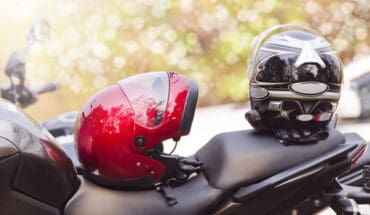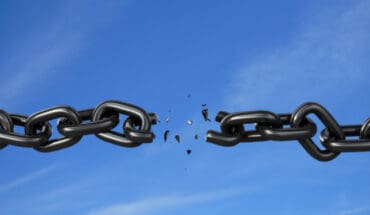However, as physiotherapists report an influx in clients needing treatment after being injured on school playing fields, it is wise to exercise caution. This is because serious injury can be caused by a sudden burst of activity which stretches the body beyond its normal limits. In some cases, this can result in a strain or a tear, leading to pain plus the need for treatment and rehabilitation. In rare cases, even surgery. So unless you are a regular athlete, be gentle on your body and always ensure you warm up properly.
Aside from injury, outdoor sports day is a day with exposure to the elements, so sunburn and dehydration are also risks to be aware of and to plan to avoid.
Read on for our comprehensive tips on sports day and how to survive it safely and in style.
Preparing for the day
Make sure they have a jumper/fleece/tracksuit top of some kind, in case it gets chilly. And a rain mac in case of wet weather. Make sure your child is wearing the appropriate footwear, wearing the right shoe for the sport. Furthermore, it should be well fitting and offer enough ankle and arch support.
Sunburn
The sun’s UV rays can very quickly damage children’s skin, even on a cloudy day. Sunburn can happen in less than 15 minutes of being out in the sunshine. However the redness and discomfort may not become apparent for a few hours. This means you should never use the colour of your child’s skin to judge if they’re burning or not. Sunburn can lead to serious problems in later life, so always aim to avoid it in the first place.
Sun protection
Before they set off for school, liberally apply a high SPF sunscreen that has a minimum of 4 stars for UVA protection all over their face and body. Make sure to apply at least 30 minutes before they go out in the sun. Also, make sure to cover their shoulders, the back of their neck, the tops of their ears, nose, cheeks and the tops of their feet.
Ensure they wear a hat, ideally with an SPF factor, wide brim and ear/neck cover.
For further tips read here: First Aid for Sunburn – top tips for treatment and prevention https://firstaidforlife.org.uk/first-aid-sunburn-top-tips-treatment-prevention/
Dehydration
As the children take part in more and more races, they will begin to get dehydrated – especially if it’s a warm day. Therefore, encourage your child to have regular drinks and to sit in the shade, where possible.
Teachers should arrange for the children to take plenty of breaks in the shade and if possible arrange quieter activities between exertion. To avoid heat exhaustion children should be offered drinks regularly and check that they are drinking them.
A further important reason for staying hydrated on sports day is that hydrated muscles are less likely to get injured.
Heat stroke or heat exhaustion
Heat exhaustion can come on suddenly and unexpectedly. Children are particular vulnerable when out in the sunshine, not drinking as much as they need and racing around. Symptoms to look out for are feeling sick, dizzy, developing stomach-ache, a headache or a raised temperature.
If this happens, take them out of the sun, into the shade or an air-conditioned environment and help them rehydrate. Frequent sips of Dioralyte are ideal, or an isotonic sports drink or water. If they don’t recover extremely quickly and you are concerned, seek medical attention.
Read more here: Stay safe in the sun this summer https://onlinefirstaid.com/stay-safe-in-the-sun-this-summer/
Injuries
Common injuries include hamstring strains and low back injuries. Ankles and knees are also high up on the casualty list, plus grazed knees and hands from the falling over mid- race.
Warm up properly
There can often be a lot of waiting around between races/activities. The children should all start with a proper warm up, but also encourage them to stretch whilst they are waiting and again before every race, to try and prevent injuries. Start the warm up with a light jog to increase their heart rate and then start stretching to prevent muscle strains and pulls.
Seek first aid
Sports Day is often the most physically competitive day of the school calendar and kids often feel they have a lot to prove. As such, they will really push themselves, which may not be great for their joints and muscles. If it looks like they might have a sprain or strain, make sure they seek help from the first-aiders and don’t let them try to continue competing. They should rest, apply a wrapped ice pack and have the injury assessed properly.
Read more here on: Surprising Statistics Concerning Sport Related Injuries in Children https://firstaidforlife.org.uk/sport-related-injuries-in-children/
Parents
But it’s not just the kids who push themselves on Sports Day. Amazingly, it’s now the mums and dad’s races that seem to have the most riding on them. Parents come dressed in their best sports clothes, ready to take 1st place in the last races of the day. But this competitive spirit can have its downside too. In most workplaces, at least someone will come in on crutches after their child’s Sports Day, having taken things too far. If you are taking part in the parents race do follow these tips to avoid injury:
Wear appropriate footwear such as trainers. Avoid sandals or flip flops to avoid a foot, ankle, shin or Achilles injury.
Wear appropriate clothing and remove jewellery.
Do warm up 5-10 mins before the race with some gentle jogging or fast walking.
Always mobilise your joints by swinging arms, side bending your low back and circling your ankles.
Be aware of any existing injuries or problematic areas you have.
Read more here: Breaks, sprains and dislocations – what you need to know: https://onlinefirstaid.com/break-sprains-and-dislocations/
Mild sprains and strains
If mild sprains and strains occur, the best way of dealing with them is PRICE therapy. These minor injuries can often be treated at home using PRICE therapy for two or three days.
PRICE stands for protection, rest, ice, compression and elevation.
Protection – protect the affected area from further injury, such as by using a support.
Rest – avoid exercise and reduce your daily physical activity. Using crutches or a walking stick may help if you can’t put weight on your ankle or knee. If you’ve injured your shoulder, a sling may help.
Ice – a wrapped ice pack applied to the affected area for 15-20 minutes every two to three hours will reduce pain and swelling. Using a bag of frozen peas works well. However, do wrap the ice pack in a towel so that it doesn’t actually touch your skin which could cause an ice burn.
Comfortable Support – bandage the affected limb to provide support and protect it from further injury.
Elevation – keep the injured body part raised above the level of your heart whenever possible. This may also help reduce swelling.
Broken Bones
In extreme cases it is possible to break a bone on sports day, perhaps from tripping or taking a tumble during a race.
The only way to know a bone is broken is to have an X-ray. If you think you’ve broken a bone, seek medical help as soon as possible. If it’s a toe or finger that’s possibly broken, go to a minor injury unit or urgent care centre.
The key indicators someone may have broken a bone are these:
Pain – it usually hurts
The limb may be at an odd angle and have a wider range of movement than normal
Swelling, bruising or a serious wound around the possible fracture site
Deformity and irregularity – often limbs may be shortened, or the broken area could have lumps and bumps, depressions or stretched skin
Crepitus – there could be a grinding sound caused by the end of bones rubbing against each other
Further reading here: 9 key indicators you may have broken a bone and tips to treat: https://onlinefirstaid.com/9-key-indicators-you-may-have-broken-a-bone-and-tips-to-treat/
Finally, remember, this Sports Day be prepared, warm up, have plenty of fun and stay safe.
- What is a seizure? - 13th March 2025
- Febrile Convulsions and Seizures in Children - 13th March 2025
- Why women are less likely to receive CPR or survive cardiac arrest - 6th March 2025









It’s fantastic to see emphasis placed on preparation and caution for School Sport’s Day, a day marked by great enthusiasm and fun but not without its potential pitfalls. From a biomechanical standpoint, sudden, intense activity without a proper warm-up can indeed lead to strains, especially in the lumbar region and surrounding musculoskeletal structures. It’s paramount to understand the intricacies of the musculoskeletal system and the kinetic chain. For example, an improperly supported ankle can lead to issues that resonate upwards, impacting knees, hips, and even the spine. Proper footwear, as mentioned, plays a pivotal role in this. Additionally, the note… Read more »